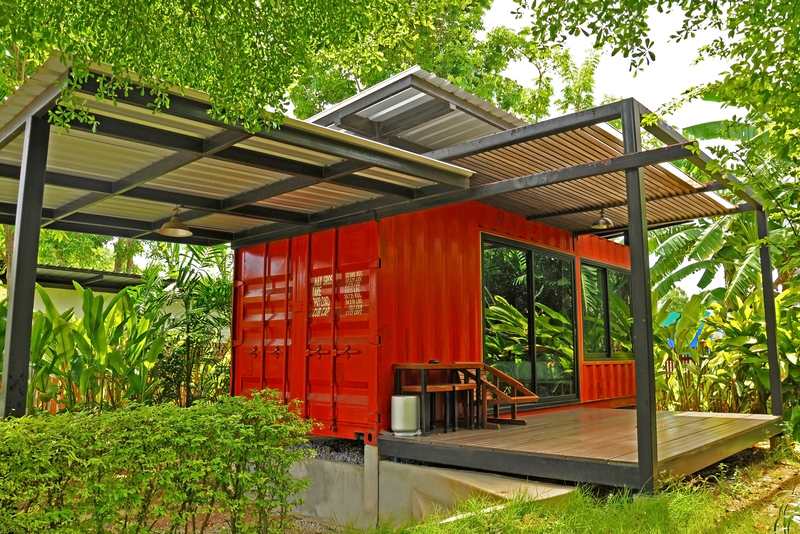Achieve Office Organization with Strategic Decluttering
Welcome to your essential guide on how to achieve office organization with strategic decluttering. In today's dynamic work environment, a well-organized office is not just about aesthetics--it's about boosting productivity, reducing stress, and fostering a motivating atmosphere for you and your team. Whether you're managing a home office, coworking space, or a traditional office setting, mastering the art of strategic decluttering can make a world of difference.

Why Office Organization Through Decluttering Matters
The state of your office directly affects your ability to focus and your overall work efficiency. Clutter can quickly lead to overwhelm, procrastination, and poor time management. On the other hand, an organized workspace brings:
- Increased productivity and faster access to essential documents
- Reduced stress and a calmer mindset
- Professional impression for visitors and coworkers
- More room for creative thinking and innovation
Studies show that physical workspace clutter can hamper your mental clarity and performance. That's why strategic decluttering is more than tidying up--it's a vital aspect of successful office management.
Understanding Strategic Decluttering in the Office
Strategic decluttering goes beyond a surface-level cleanup. It means making intentional decisions about what stays, what goes, and how every item serves your workflow. By implementing a well-thought-out strategy, you can achieve office organization that is sustainable and tailored to your unique business needs.
- Purpose-Driven: Every item has a designated role or function.
- Systematic: Follows a clear plan or proven decluttering methodology.
- Sustainable: Supports long-term organization, not just a one-time fix.
Let's dive into a practical, step-by-step approach to strategic decluttering and office organization.
Step-by-Step: Your Guide to Achieving an Organized Office Through Decluttering
1. Assess Your Office Environment
Begin with a thorough assessment. Take a moment to walk through your office and observe areas that are cluttered, inefficient, or in disarray. Look for:
- Piles of paperwork or unsorted files
- Unused office equipment or outdated supplies
- Messy cables, overflowing drawers, or crowded desktops
- Items that interrupt the workflow or are rarely used
Tip: Document your findings with notes or photos--this will help you track progress and identify recurring issues.
2. Set Clear Organizational Goals
To achieve office decluttering success, define specific objectives. Examples include:
- Reducing paper clutter by 70%
- Creating a designated space for incoming and outgoing mail
- Establishing easy-access zones for frequently used tools
- Minimizing personal distractions in the workspace
Setting measurable goals keeps you focused and accountable. Create a timeline for reaching each milestone.
3. Implement the Declutter-Sort-Organize Method
This three-phase process is crucial for strategic office decluttering:
- Declutter: Remove all items from desktops, shelves, drawers, and cabinets. As you handle each item, ask: Do I need this? Does it help my work?
- Sort: Group your items into categories (keep, toss, donate, archive). Be honest--only retain items that are essential or add value.
- Organize: Return only key items to their places, ensuring every object has a specific function and location.
Pro Tip: For paperwork, employ the "touch once" rule--deal with documents immediately, whether filing, scanning, or discarding.
4. Digitize and Go Paperless
Achieving an organized office is much easier when digital tools replace physical clutter. Here's how to make your office more digital:
- Switch to cloud storage for documents and forms
- Use paperless invoicing, contracts, and notes
- Invest in a reliable document scanner
- Adopt project management and team collaboration software
Going digital not only saves space but also makes information retrieval quicker and easier.
5. Create Efficient Storage Solutions
Effective storage is a foundation of office organization. With the right systems, even a small office can function smoothly. Consider these solutions:
- Labeled Bins & Drawers: Assign a clear label for everything to streamline finding and returning items.
- Vertical Storage: Use shelves and wall-mounted organizers to maximize space and keep desks clear.
- Cable Management: Manage tech clutter with cable clips, trays, and under-desk systems.
- Desktop Trays: Sort daily paperwork and projects into stackable trays for easy access.
Investing in smart storage pays off in daily efficiency and a tidy workspace.
6. Minimize Digital Clutter
Digital disorganization can be just as overwhelming as physical mess. To achieve an organized office digitally:
- Regularly delete unnecessary emails and files
- Use folders and consistent naming conventions
- Set monthly or quarterly reminders to review and clean up digital spaces
- Limit desktop shortcuts to the most important programs
- Bonus: A clean desktop background improves focus and reduces visual clutter!
Maintaining Your Organized Office: Tips for Sustainability
Office organization through decluttering is an ongoing process. Adopt these best practices to preserve your newly organized space:
- Daily 10-Minute Reset: Spend the last 10 minutes of each workday resetting your workspace.
- Monthly Deep Cleans: Schedule regular, deeper decluttering sessions to tackle overlooked areas.
- Set Boundaries for New Items: For every new item that enters, one must leave--especially true for supplies and technology.
- Encourage a Team Mindset: If you work with others, make organization a shared value and assign collective responsibilities.
Establish Office Organization Policies
Institute office organizational policies such as clean desk protocols, shared resource management, or digital file naming standards. When everyone is clear on expectations, it's much easier to maintain order and efficiency.
The Psychological Benefits of a Decluttered, Organized Office
A well-organized office isn't just easier to navigate--it also provides significant psychological benefits. Experts on workplace productivity highlight how achieving office organization with strategic decluttering can:
- Reduce decision fatigue by eliminating unnecessary choices
- Lower anxiety and boost mood
- Increase motivation and job satisfaction
- Enhance collaboration and communication among team members
- Improve professional confidence--especially in client-facing roles
Imagine walking into an office every morning that is welcoming, functional, and free of distractions. That's the power of strategic decluttering.
Common Office Decluttering Challenges (and How to Overcome Them)
Despite your best intentions, several obstacles can stand in the way of achieving office organization:
- Emotional Attachment: It can be hard to let go of items with sentimental value. Solution: Take a photo for the memory, and donate or toss the item.
- Fear of Need: "What if I need this later?" Solution: Set aside items in a "maybe" box--review after 30 days, and if unused, you can safely let it go.
- Time Constraints: Decluttering can seem overwhelming. Solution: Break the process into small, manageable tasks. Use 15-minute bursts of focused effort.
- Lack of Systems: Without a plan, clutter returns. Solution: Develop personalized filing, storage, and workflow systems after each decluttering session.
Stay motivated by focusing on the positive changes that come from strategic office organization.
Tools and Products to Enhance Office Organization
Investing in the right organizational tools can make the decluttering process both easier and more enjoyable. Some popular options include:
- Label Makers: Instantly identify contents of bins, files, or cables.
- Drawer Organizers: Prevent "junk drawer syndrome" by creating sections for different supplies.
- Cable Management Kits: Tame messy wires behind your computer and under your desk.
- Vertical Filing Racks: Keep important documents upright and easily accessible.
- Document Scanners: Intelligently digitize and archive essential papers.
When choosing products, prioritize versatility and durability--aim for solutions that adapt as your needs evolve.

Strategic Decluttering in Different Types of Offices
The principles of strategic decluttering apply to any office--large or small, physical or virtual. Here's how to tailor your approach:
- Home Offices: Integrate organization with home decor, using multi-functional furniture and concealed storage.
- Shared Offices: Establish clear communal guidelines, shared storage spaces, and label all group-owned items.
- Remote Workspaces: Keep your "office-in-a-bag" minimal, and ensure your digital workspace is just as organized as your physical one.
- Corporate Suites: Assign specific zones for departments--minimize cross-contamination of equipment and supplies.
Adapt and experiment until you find the perfect combination of systems for your daily routines.
Conclusion: Transform Your Workspace with Strategic Office Decluttering
In summary, the path to achieving office organization with strategic decluttering is both practical and highly rewarding. By assessing your workspace, setting clear goals, using deliberate decluttering methods, and maintaining new systems, you not only create an efficient office--you create an environment for professional growth and well-being.
Remember, office organization is a journey, not a destination. Embrace continual improvement, celebrate your progress, and encourage others in your office to join you.
Make today the day you commit to strategic decluttering--and unlock your workspace's full potential!